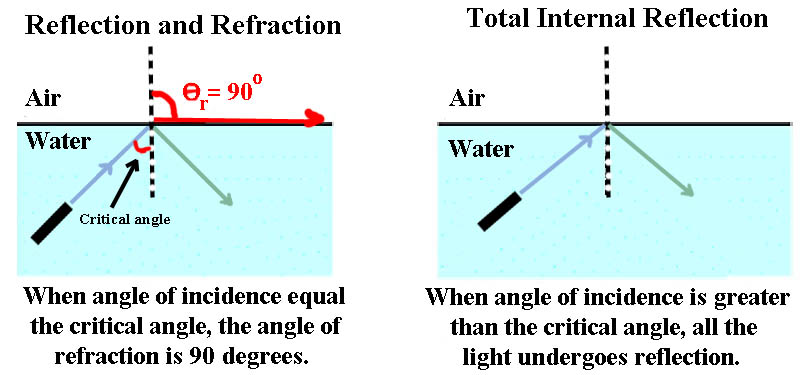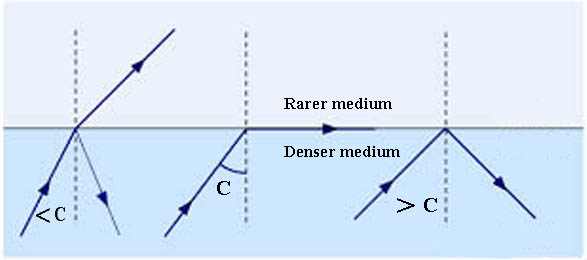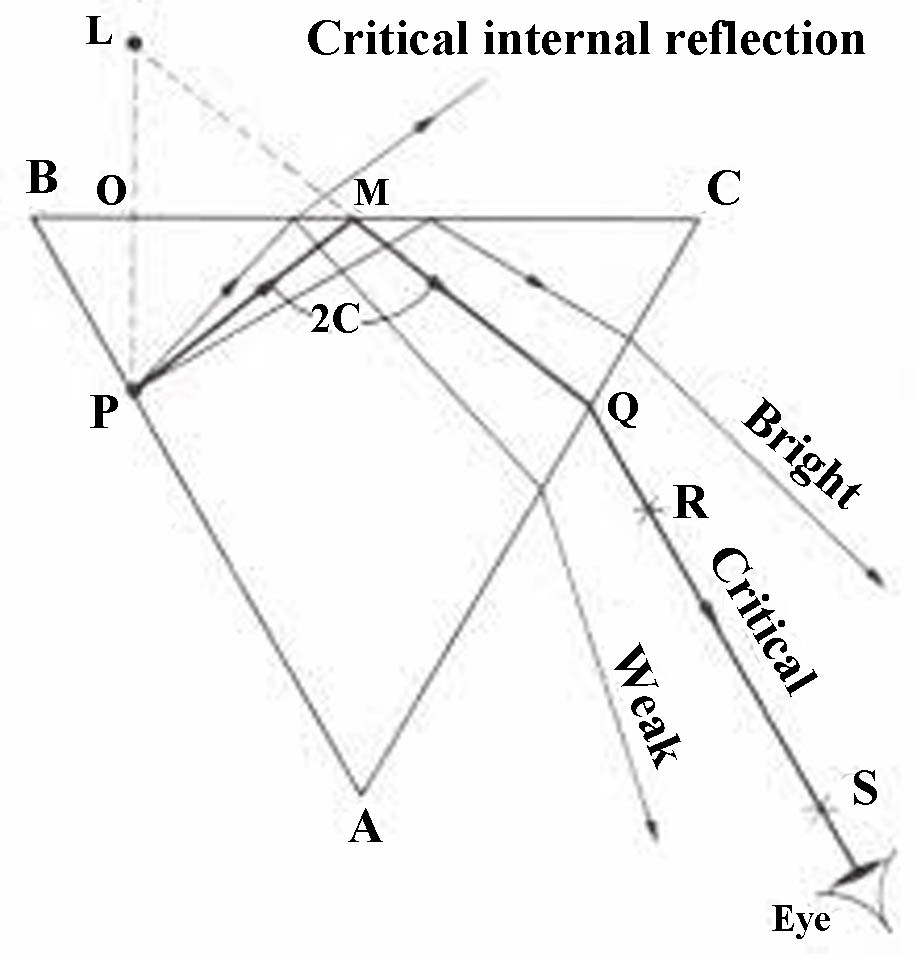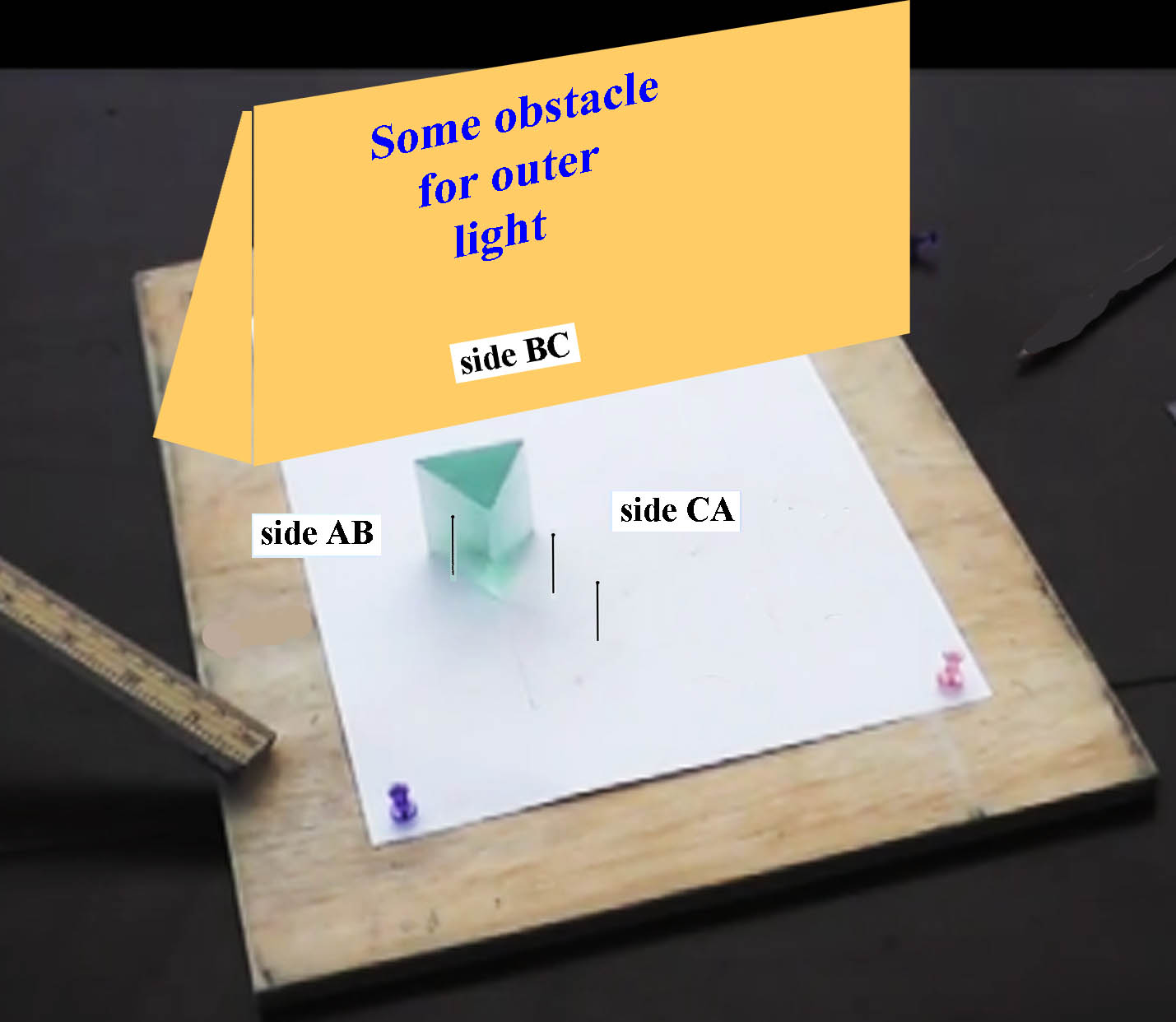Supplement- Critical angle for glass prism
Look the video if not seen ................. http://youtu.be/YouSXR2fXyQ
Internal reflection: Reflection within a medium.
Total internal reflection:
1) The reflection of light at the boundary of two transparent media when the angle of incidence exceeds the critical angle.
2) Reflection which occurs when the angle of incidence is greater than the critical angle.
Critical angle: The angle of incidence for which the angle of refraction is 90o .
When the angle of refraction is equal to 90°, the angle of incidence is called the critical angle. At any angle of incidence greater than the critical angle, the light cannot pass through the surface - it is all reflected.
The angle of incidence is measured with respect to the normal at the boundary of two media.


Glass Prism
The actual value of the critical angle is dependent upon the two materials on either side of the boundary. For the crown glass-air boundary, the critical angle is 41.1 degrees.
Consider a light ray passing from glass into air. At the point of critical angle, no light is transmitted into air.



Sometime from side BC some outer light interferes in looking the pin image at side CA. Place side BC in such a way where there is minimum light coming from outer window or put some obstacle or make such arrangement that the pin 'P' should be brighter than the surrounding.
When image of the pin starts dull, right at that point put pin 'R'. Please look the video:
.............. https://youtu.be/0kpM_AqdV_4
Prism Types
1) Crown glass prism:
Critical angle is 41.1 (Refractive index, n = 1.5). Crown glass is produced from alkali-lime (RCH) silicates containing approximately 10% potassium oxide.
2) Flint glass prism:
Critical angle is 38.7 (Refractive index, n = 1.6). Flint glass heavy brilliant glass that contains lead oxide.
3) Sapphire- SF18 Prism:
Sapphire is a gemstone, a variety of the mineral corundum, an aluminium oxide. It is typically blue in color.
Materials with a low index of refraction are commonly referred to as "crowns" whereas materials with a high index of refraction are referred to as "flints".
Crown glasses tend to have lower dispersion than flints.
The Result
When you get critical angle less than 41.1 degrees, some factors to be considered:
i) When looking and moving eye from right towards left, sometimes the pin image immediately changes from bright to dull, put the pin 'R' exactly at that point. For pure crown glass with good surrounding conditions, we get that.
ii) When the pin image slowly changes from bright to dull (for flint glass or poor surrounding conditions), put the pin 'R' , when the image starts becoming dull.
iii) If you are getting critical angle less than 41.1 degrees, you can put a note to ending result that the glass prism provided is not of pure crown glass.
iv) If you are getting critical angle around 39 degrees than the prism is of flint glass.
